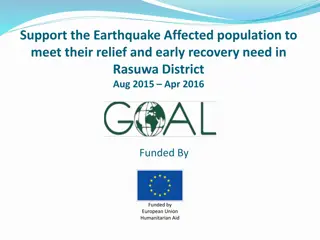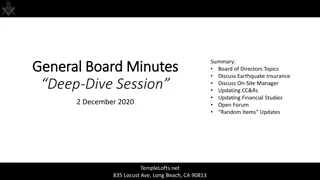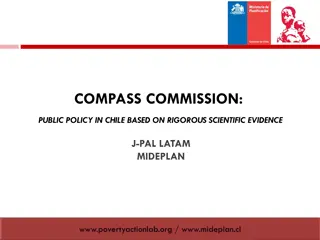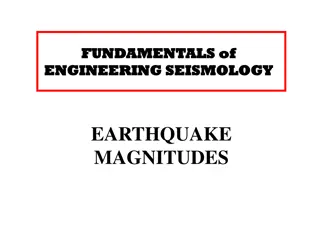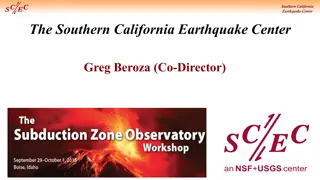Environmental Impact Assessment and Recovery Planning After the 2010 Chile Earthquake
The presentation discusses the Rapid Environmental Impact Assessment (REA) process conducted by a team of Chileans post the 2010 earthquake. It emphasizes the incorporation of assessment results into post-disaster recovery planning to address key issues such as disaster debris management, transitional shelter, sewage management, water supplies, geophysical changes, sustainable resource use, and coordination for environmental-related issues.
- Environmental Impact Assessment
- Recovery Planning
- 2010 Chile Earthquake
- Disaster Management
- Rapid Assessment
Download Presentation

Please find below an Image/Link to download the presentation.
The content on the website is provided AS IS for your information and personal use only. It may not be sold, licensed, or shared on other websites without obtaining consent from the author. Download presentation by click this link. If you encounter any issues during the download, it is possible that the publisher has removed the file from their server.
E N D
Presentation Transcript
C. Kelly [havedisastercallkelly@gmail.com] 10iv14 IAIA Vina del Mar 1
Focus on The process and results of the REA How the results were incorporated onto post disaster recovery planning. 10iv14 IAIA Vina del Mar 2
The Earthquake 27 February 2010 8.8 magnitude earthquake and tsunami Relatively low death toll but significant damage Environmental impacts 10iv14 IAIA Vina del Mar 3
Rapid Environmental Impact Assessment Standard REA process (http://www.preventionweb.net/english/pro fessional/publications/v.php?id=8267) May/June 2010 Team of Chileans from WWF Chile, national government and Antofagasta Minerals 2 advisors from WWF/US Site visits and interviews with survivors, government officials, local organizations 10iv14 IAIA Vina del Mar 4
Disaster Debris Management : need for good practice management Transitional Shelter: fire hazard, run-off and local flooding , fuel wood access, improved waste water management Sewage Management: repair damaged facilities, conduct a seismic assessment facilities elsewhere and improve sewage management as part of recovery efforts, Water Supplies: Assess damage to water supplies and define risk reduction options Geophysical Changes: Remap marine resources, beaches, harbors and river outlets Access to Land for Housing: Consider mitigation measures where hazardous locations are used for re-housing Sustainable Natural Resource Use for Reconstruction: Assess overall environmental impacts of recovery and reconstruction. Environmental Review: Special environmental impact review procedure for recovery efforts to identify positive and negative trade-offs of recovery plans Coordination: Improved coordination of environment- related issues Results 10iv14 IAIA Vina del Mar 5
C. Kelly [havedisastercallkelly@gmail. com] 10iv14 IAIA Vina del Mar 6










